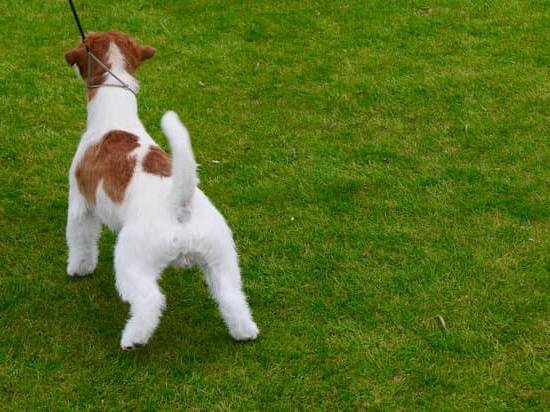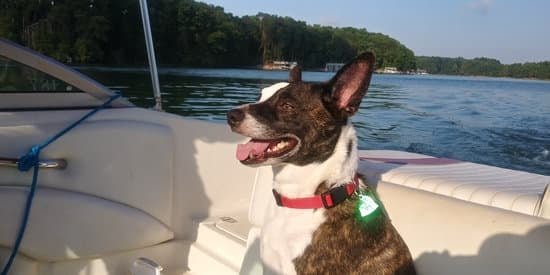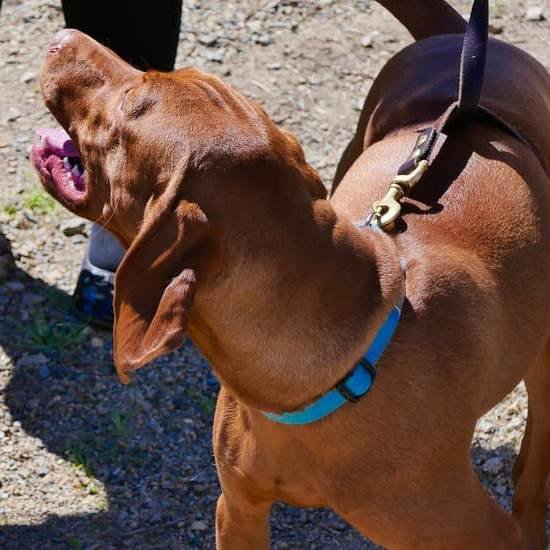Are you wondering how to train your dog not to eat everything in sight? It can be frustrating and concerning when our furry friends seem to have an insatiable appetite for non-food items. In this article, we will explore the root causes of this behavior and provide practical tips on how to address it effectively.
Understanding why dogs eat everything is crucial in successfully addressing this issue. Whether it’s boredom, anxiety, or simply a bad habit, there are various reasons why dogs exhibit this behavior. By delving into the underlying factors, you can better tailor your approach to preventing your dog from consuming inappropriate items.
In the following sections, we will discuss identifying problematic behaviors and triggers in your dog, establishing a consistent feeding schedule and proper diet, providing mental and physical stimulation, using positive reinforcement training techniques, teaching commands for better control, implementing management strategies, and seeking professional help if necessary. By addressing these aspects comprehensively, you can effectively train your dog not to eat everything. So let’s get started.
Identifying Problematic Behaviors and Triggers in Your Dog
Understanding problematic behaviors and triggers in your dog is crucial in training them not to eat everything. Dogs may engage in this behavior due to various reasons such as boredom, anxiety, hunger, or even medical conditions. By identifying the root cause of their behavior, you can effectively address it and prevent them from ingesting harmful items.
Some common triggers for dogs eating everything include being left alone for long periods, lack of mental and physical stimulation, and feeling anxious or stressed. It’s important to observe your dog’s behavior and environment to pinpoint what might be causing them to exhibit this behavior.
One effective way on how to train a dog not to eat everything is by establishing a consistent feeding schedule and providing a proper diet. Ensuring that your dog is getting enough nutrients and calories can reduce their inclination to consume non-food items. Additionally, offering mental and physical stimulation through interactive toys, regular walks, and playtime can keep them occupied and less likely to resort to consuming objects.
It’s also essential to use positive reinforcement training techniques when addressing problematic eating behaviors in dogs. Rewarding them with treats or praise when they choose not to eat something they shouldn’t can help reinforce good behavior.
Teaching the “leave it” and “drop it” commands can also provide better control over what your dog puts in their mouth. If despite these efforts your dog continues to exhibit problematic eating behaviors, seeking professional help from a dog behaviorist or trainer may be necessary.
| Factors | Description |
|---|---|
| Triggers for problematic eating | Boredom, anxiety, hunger, medical conditions |
| Feeding schedule and diet | Consistency in feeding schedule; nutrient-rich diet |
| Positive reinforcement training | Rewarding good behavior; teaching “leave it” and “drop it” commands |
By taking a proactive approach in understanding these behaviors and implementing appropriate training techniques, you can help your dog overcome their tendency to eat everything they come across.
Establishing a Consistent Feeding Schedule and Proper Diet for Your Dog
Many dog owners may not realize that their pet’s tendency to eat everything in sight can often be linked to their feeding schedule and diet. Establishing a consistent feeding schedule and providing a proper diet can play a crucial role in curbing this behavior.
The Importance of a Consistent Feeding Schedule
Dogs thrive on routine, and having a consistent feeding schedule can help regulate their eating habits. By feeding your dog at the same times every day, you can also regulate their digestive system, making it less likely for them to feel the urge to eat non-food items out of boredom or anxiety.
Selecting the Right Diet for Your Dog
A well-balanced and nutritious diet is essential for keeping your dog healthy both physically and mentally. Ensure that your dog’s food provides all the necessary nutrients, vitamins, and minerals they need. Consider consulting with your veterinarian to determine the best diet for your pet based on their age, breed, size, and any specific health considerations.
By establishing a consistent feeding schedule and providing your dog with a proper diet, you can contribute to reducing their inclination to scavenge and consume foreign objects. Remember that consistency is key when implementing these changes in your dog’s routine.
Providing Mental and Physical Stimulation to Prevent Boredom and Anxiety
There are several reasons why dogs may exhibit the behavior of eating everything in sight, and one of the most common causes is boredom and anxiety. Dogs, especially those with high energy levels, need mental and physical stimulation to keep them engaged and prevent them from resorting to destructive behaviors like consuming non-food items. Here are some ways on how to train a dog not to eat everything by providing the necessary mental and physical stimulation:
- Engage in regular exercise: Daily walks, runs, or playtime at the park can help burn off excess energy and prevent boredom in your dog. Consider incorporating interactive toys or activities that promote problem-solving skills to keep their minds active as well.
- Establish a routine: Dogs thrive on routine, so providing them with consistent feeding times, walks, and playtime can help reduce stress and anxiety. Predictability can also provide a sense of security for your dog.
- Enrich their environment: Create an enriching environment for your dog by providing puzzle toys, food-dispensing toys, or setting up a backyard agility course. These activities can stimulate their minds and keep them occupied in a positive way.
By incorporating these mental and physical stimulation techniques into your dog’s daily routine, you can help alleviate boredom and anxiety, ultimately reducing the likelihood of them eating everything in sight. Remember, a tired and stimulated dog is less likely to engage in destructive behaviors out of sheer boredom or anxiety.
Using Positive Reinforcement Training Techniques to Discourage Eating Objects
It can be frustrating and concerning when your dog has a habit of eating everything in sight. This behavior not only poses a risk to their health but also creates stress for you as the owner. Positive reinforcement training techniques can be an effective method to discourage this behavior and redirect your dog’s focus onto more appropriate activities.
One way to use positive reinforcement is by rewarding your dog with treats, praise, or toys when they choose to ignore or avoid eating objects. By consistently rewarding this desired behavior, your dog will begin to understand that there are more enjoyable and satisfying alternatives to eating random items. Additionally, using this technique helps to strengthen the bond between you and your pet, creating a positive association with following commands and behaviors.
To effectively use positive reinforcement, it’s important to set clear boundaries and establish consistent rules for your dog. For example, if you notice them reaching for an object they shouldn’t eat, redirect their attention to a chew toy or engage them in a game with you instead. This not only prevents them from ingesting harmful items but also reinforces the idea that engaging in appropriate activities brings pleasant outcomes.
Moreover, incorporating obedience training into your daily routine can further reinforce positive behavior while providing mental stimulation for your dog. Training sessions that incorporate the “leave it” and “drop it” commands are valuable tools to help teach your dog impulse control and better manage their interactions with objects they encounter. Consistency is key when using positive reinforcement techniques, so be patient and persistent in implementing these methods on a regular basis.
- Rewarding with treats, praise, or toys
- Setting clear boundaries and rules
- Incorporating obedience training
Teaching the Leave It and Drop It Commands for Better Control
Teaching your dog the “leave it” and “drop it” commands can be essential in preventing them from eating everything in sight. These commands provide you with better control over your dog’s behavior, especially when they are tempted by something they shouldn’t eat.
To teach the “leave it” command, start by showing your dog a treat in your closed hand. When they show interest, say “leave it” firmly. Once they stop paying attention to your hand, reward them with a different treat. Repeat this process several times until your dog reliably responds to the “leave it” command.
The “drop it” command is equally important, as it can prevent your dog from swallowing harmful objects. Start by offering a toy or object to your dog and saying “take it.” Then show them a high-value treat and say “drop it” as you gently touch their mouth or toy with the treat. When they release the object, reward them with the treat and offer positive reinforcement.
Consistency and patience are key when teaching these commands. Practicing regularly in various environments will help reinforce their understanding of what is expected of them when using the “leave it” and “drop it” commands.
| Training Command | Training Technique |
|---|---|
| Leave It | Show a treat in closed hand; use positive reinforcement |
| Drop It | Offer a toy or object; use high-value treats for rewards |
Implementing Management Strategies to Keep Tempting Items Out of Your Dog’s Reach
When it comes to training your dog not to eat everything, it’s important to implement management strategies to keep tempting items out of their reach. This is crucial in preventing any potential harm or danger to your dog, as well as keeping your belongings safe from being chewed or ingested. By following these strategies, you can create a safer environment for your pet and reduce the risk of them consuming harmful objects.
Storing Items Properly
One of the most effective ways to prevent your dog from eating everything is by storing tempting items properly. This includes keeping food, medication, household chemicals, and small objects out of your dog’s reach. Consider using childproof locks on cabinets, placing trash cans in secure areas, and using elevated storage for items that could be appealing to your dog.
Creating Designated Play Areas
Designating specific play areas for your dog can also help prevent them from getting into things they shouldn’t. By creating a space with appropriate toys and activities, you can redirect their attention away from potentially dangerous items. This can be particularly helpful when you’re not able to supervise them closely.
Safety-Proofing Your Home
Another important aspect of implementing management strategies is safety-proofing your home. This involves getting down on your hands and knees to see things from your dog’s perspective. Look for any potential hazards or tempting items that they may be able to access and take the necessary steps to eliminate or secure them.
By implementing these management strategies, you can significantly reduce the likelihood of your dog eating everything in sight. Additionally, it’s essential to combine these strategies with positive reinforcement training techniques and consistent supervision for optimal results in training your dog not to eat everything. If despite all this effort the problem persists consult a professional trainer will provide guidance on additional measures that you can take.
Seeking Professional Help From a Dog Behaviorist or Trainer if Necessary
In conclusion, training your dog not to eat everything requires understanding the root cause of their behavior and implementing a structured approach to address it. By identifying problematic behaviors and triggers, establishing a consistent feeding schedule and proper diet, providing mental and physical stimulation, using positive reinforcement training techniques, teaching commands for better control, and implementing management strategies, you can effectively discourage your dog from eating objects they shouldn’t.
It’s important to remember that each dog is different, and what works for one may not work for another. If despite your best efforts, your dog continues to exhibit problematic eating behaviors or if you feel overwhelmed with the training process, seeking professional help from a dog behaviorist or trainer is always an option.
These experts have the knowledge and experience to assess your dog’s specific needs and develop a tailored training plan that will help address their behavior in a more effective way.
By following these steps and being patient and consistent in your training efforts, you can gradually teach your dog not to eat everything. Remember that training takes time and dedication but with the right approach and support, you can help your furry friend overcome this challenging behavior.
Frequently Asked Questions
How Do I Get My Dog to Stop Eating Everything?
To get your dog to stop eating everything, it’s important to first ensure they are getting enough mental and physical stimulation. You can also try using deterrent sprays or keeping dangerous items out of reach.
Do Dogs Grow Out of Eating Everything?
Some dogs do grow out of their habit of eating everything, especially as they mature and their behavior improves with training and consistency from their owners. However, some dogs may continue the behavior without intervention.
How Do You Discipline a Dog That Eats Everything?
When disciplining a dog that eats everything, it’s crucial to focus on positive reinforcement rather than punishment. This includes redirecting their attention, providing appropriate chew toys, and consistently reinforcing commands like “leave it” or “drop it.” Consistency is key in correcting this behavior.

Welcome to the blog! I am a professional dog trainer and have been working with dogs for many years. In this blog, I will be discussing various topics related to dog training, including tips, tricks, and advice. I hope you find this information helpful and informative. Thanks for reading!





